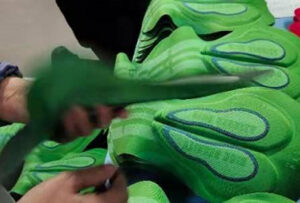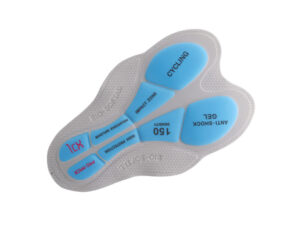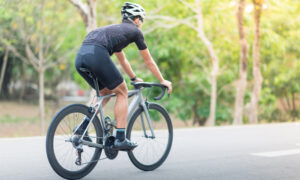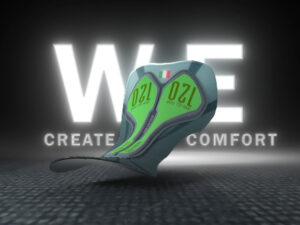Cycling, a pastime embraced with enthusiasm by children worldwide, isn’t just a way to have fun? It’s also a wonderful opportunity for kids to gain a sense of independence and physical fitness. However, the thrill of biking comes with inherent risks, particularly for young, inexperienced riders. This underscores the paramount importance of wearing appropriate safety gear, with cycling pads being at the forefront of preventing injuries. Cycling pads for kids are essential not just for professional or competitive young cyclists but for any child who hops on a bike. By integrating protective pads into their routine, children can enjoy the myriad benefits of cycling while significantly minimizing the risk of injuries.
Understanding Cycling Pads for Kids
Cycling pads, often overlooked in the excitement of buying a new bicycle, are critical safety accessories designed to protect vulnerable parts of a child’s body. The primary types of pads include knee pads, elbow pads, and wrist guards, each serving a unique protective function. These are crafted from a variety of materials:
- Foam pads are lightweight and provide basic protection, suitable for casual riding in safe environments.
- Hard-shell pads offer enhanced protection and are ideal for more aggressive cycling or skateboarding, where falls are more common.
The design of these pads also varies significantly. Some are sleek and barely noticeable under clothing, while others are bulkier but offer more comprehensive coverage. The choice of material and design impacts not just the level of protection provided but also the comfort and mobility of the child wearing them. It’s a delicate balance—pads need to be robust enough to protect, yet flexible enough to allow full movement.
Choosing the Right Cycling Pads for Your Child
When it comes to selecting the right cycling pads for your child, the process can be likened to picking a perfect pair of shoes. It’s all about the fit. Pads that are too tight may restrict movement and be uncomfortable, while those that are too loose could slip off during a fall, failing to protect when needed most. Here’s how you can ensure a proper fit:
- Measure accurately: Before purchasing, measure the circumference of your child’s knees and elbows to match with the manufacturer’s sizing chart.
- Look for adjustable straps: These can help customize the fit, ensuring the pads stay securely in place.
- Read reviews: Other parents’ experiences can be invaluable in determining how true-to-size certain brands or models are.
Furthermore, while it might be tempting to choose pads based solely on their aesthetic appeal—especially if your child is picky about appearances. It’s crucial to prioritize functionality and safety over style. After all, a well-protected child is a happy cyclist, and the peace of mind that comes from knowing they are safeguarded is priceless. Thus, comfort should not be compromised for the sake of protection, and vice versa. Striking this balance is key to nurturing a positive, long-lasting relationship between your child and their cycling adventures.
The Role of Cycling Pads in Preventing Injuries
Cycling pads serve as the first line of defense against the common injuries that can occur during a fall from a bike. For young cyclists, the elbows, knees, and wrists are particularly vulnerable. When these parts are well-protected by quality pads, the risk of scrapes, bruises, and more severe injuries like fractures can be greatly reduced. The protective technology in these pads disperses the impact energy away from the body, which is crucial in preventing broken bones or joint injuries that could otherwise result from a nasty fall.
Research shows that consistent use of protective gear, including cycling pads, significantly reduces the incidence of injuries in children engaging in wheeled sports. It’s an investment in your child’s safety that encourages more confident and fearless learning and exploration on their bicycle. This protective measure thus not only guards their physical well-being but also supports their psychological comfort by instilling a sense of security while they ride.
Popular Brands and Options in the Market
The market for children’s cycling pads is diverse, with numerous brands offering a range of products tailored to different needs and budgets. Brands like G-Form, Strider, and Fox Racing are renowned for their high-quality materials and innovative designs that provide maximum protection without sacrificing comfort. For instance, G-Form is celebrated for its Reactive Protection Technology™, which hardens on impact and absorbs over 90% of the energy, offering superb protection during crashes.
When comparing different brands, here are a few aspects to consider:
- Material Quality: Higher-quality materials typically offer better durability and protection.
- Design and Comfort: Look for designs that balance protection with comfort, allowing children to move freely.
- Customer Reviews: These can provide real-life insights into how the pads perform in various conditions, which is invaluable when making a decision.
These factors play a crucial role in determining which cycling pads will best meet the needs of young riders. Parents should look for products that not only fit their child’s specific cycling activities but also offer the best combination of safety, comfort, and long-term usability.
Maintenance and Care for Cycling Pads
To ensure the longevity and effectiveness of cycling pads, proper maintenance is crucial. Like any sporting gear, these pads accumulate sweat, dirt, and grime, which can degrade the materials over time if not cleaned regularly. Here’s how to keep your child’s cycling pads in top condition:
- Cleaning: Most cycling pads can be hand-washed with mild soap and lukewarm water. Avoid using harsh detergents, which can break down the materials and reduce the pads’ protective qualities. For pads with removable protective inserts, take them out before washing the fabric components.
- Drying: After washing, let the pads air dry away from direct sunlight, as UV rays can weaken the fabrics and materials used in the pads. Never use a machine dryer, as the intense heat can warp protective plastics and foam.
- Regular Checks: Inspect the pads regularly for signs of wear and tear. Look for cracks in the plastic, fraying straps, or compressed padding, which can all compromise the safety of the pads. Replace any gear that shows significant signs of deterioration.
Proper care not only extends the life of the pads but also ensures they provide maximum protection every time your child goes cycling.
Integrating Cycling Pads into Kids’ Cycling Routine
Creating a habit of wearing protective pads can be challenging, especially with younger children. However, making safety gear a non-negotiable part of cycling from the very beginning sets a standard that safety is paramount. Here are some strategies to help integrate cycling pads into your child’s routine:
- Make it a Rule: Just like wearing a helmet, wearing cycling pads should be an automatic part of getting ready to ride. Explain to your child why these pads are important, relating their use to being able to ride the bike.
- Choose Appealing Gear: Let your child pick out pads that they like—whether they’re drawn to certain colors, patterns, or characters. If kids like how the pads look, they’re more likely to wear them without a fuss.
- Lead by Example: If older siblings or parents also wear protective gear while cycling or engaging in sports, younger children will be more inclined to follow suit.
This approach not only encourages compliance but also fosters a safety-first mindset, crucial for all activities, not just cycling.
Cost vs. Quality in Kids’ Cycling Pads
When it comes to purchasing cycling pads for kids, parents often face the dilemma of cost versus quality. While it might be tempting to go for cheaper options to save money, investing in high-quality pads can be more cost-effective in the long run. Here’s why:
- Durability: Higher-quality pads are made from better materials that can withstand more wear and tear, meaning you won’t have to replace them as often.
- Better Protection: More expensive pads often provide better protection through advanced materials and designs. This can reduce the risk of injuries, which might lead to medical bills far surpassing the cost of a good pair of pads.
- Comfort: Comfortable pads are more likely to be worn regularly without complaint, ensuring that your child is protected whenever they ride.
Thus, while the initial investment might be higher, the long-term benefits of purchasing quality cycling pads far outweigh the cost. This is not just a purchase; it’s an investment in your child’s safety and in promoting a lifelong enjoyment of cycling.
Legal and Safety Regulations Regarding Kids’ Cycling Gear
Navigating the landscape of legal and safety regulations concerning children’s cycling gear can be crucial for parents wanting to ensure they adhere to the best practices for safety. Different regions may have specific laws dictating the minimum safety standards for cycling pads and other protective gear. These regulations are designed to protect consumers by ensuring that products meet certain safety criteria before they can be sold.
Here’s what parents should consider:
- Check Local Laws: Some localities require specific types of gear for children under certain ages. Being aware of these laws can help parents avoid fines and, more importantly, keep their children safe.
- Standards and Certifications: Look for products that meet national or international safety standards. Certifications from recognized bodies indicate that the pads have been tested for safety and effectiveness in protecting against impacts.
- Updated Information: Safety standards and regulations can change. Keeping up-to-date with the latest requirements ensures that the cycling pads you purchase provide adequate protection as per current guidelines.
Understanding these rules helps in making informed purchasing decisions. At the time it educates parents on the importance of safety in children’s cycling activities, ensuring that the fun of biking remains intertwined with protective measures.
Frequently Asked Questions
What size cycling pads should I buy for my child?
To ensure a proper fit, measure the circumference of your child’s knees and elbows and compare these measurements with the sizing charts provided by the manufacturers. It’s crucial that the pads fit snugly enough to stay in place during a fall but not so tight as to restrict movement.
Which brands offer the best protection?
Brands like G-Form, Strider, and Fox Racing are highly regarded for their protective technologies and quality materials. Look for user reviews and product ratings to understand which brands consistently meet the safety expectations of other consumers.
How often should cycling pads be replaced?
Replace cycling pads if you notice significant wear and tear, such as cracks in the plastic, fraying straps, or compressed padding. Even if they show no visible signs of deterioration, consider replacing them if they’ve been heavily used for more than a year.
Can cycling pads be washed in a washing machine?
It’s best to hand wash cycling pads with mild soap and lukewarm water to avoid damaging the materials. Check the care instructions provided by the manufacturer as some may allow machine washing on a gentle cycle.
Are there cycling pads suitable for other sports?
While some cycling pads can be versatile enough for use in other sports like skateboarding or rollerblading, it’s important to use gear specifically designed for the sport your child is involved in, as different activities have different impact dynamics and protection needs.
What should I do if my child resists wearing pads?
Explain the importance of wearing pads in a way that resonates with them, such as comparing them to superhero armor. Allow them to choose pads in styles or colors they like, and encourage older siblings or friends to model positive behavior by wearing their gear as well.
Conclusion and Future Outlook on Cycling Safety for Kids
As we look to the future, the evolution of children’s cycling safety gear, including pads, appears promising. With advancements in materials science and ergonomic design, the next generation of cycling pads will likely offer even greater protection and comfort. This progression will further enhance the appeal of cycling, encouraging more children to take up biking while ensuring they remain protected.
The role of parents in this is undeniably crucial—by choosing the right pads, maintaining them properly, and ensuring they are used consistently, parents safeguard their children’s biking adventures. Ultimately, the goal is for kids to embrace cycling not only as a fun activity but also one where they automatically gear up to protect themselves, making safety as instinctive as pedaling a bike. As such, continued education and awareness about cycling safety norms and best practices remain key to fostering a culture of safety among the youngest of cyclists.





